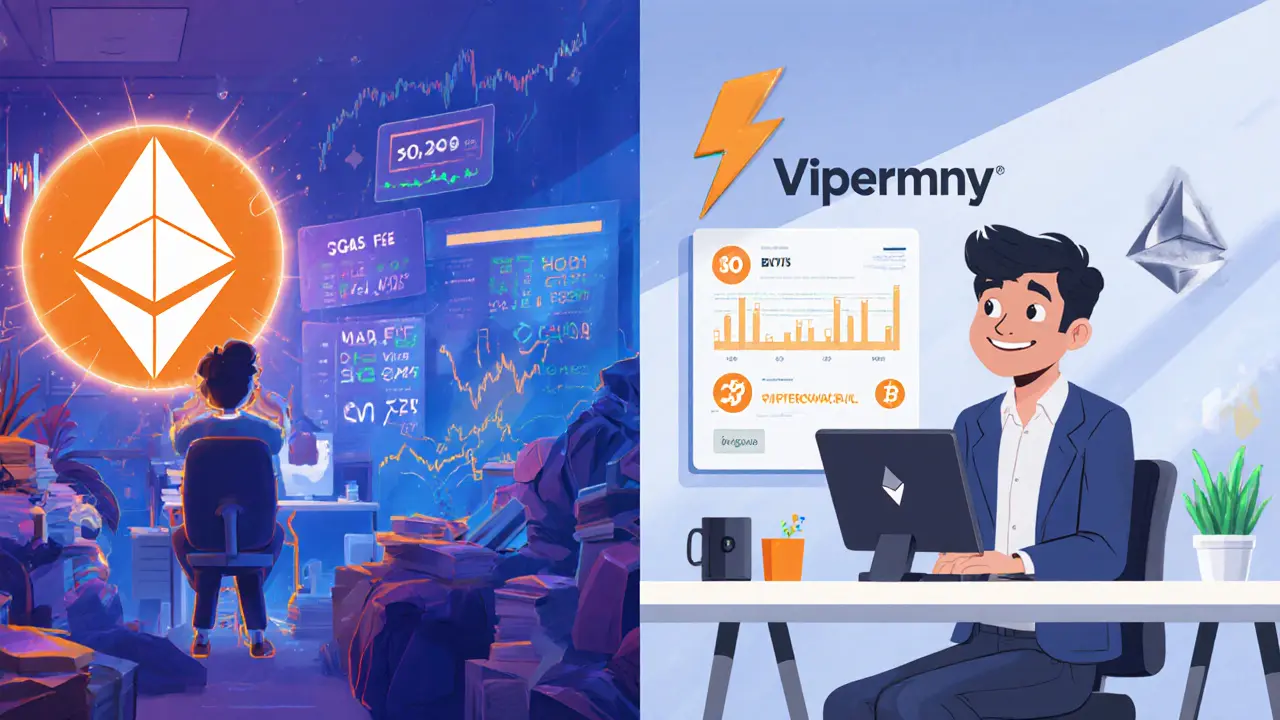When looking at Crypto Exchange Fees, the charges applied by platforms for buying, selling, withdrawing or depositing digital assets. Also known as trading fees, they directly affect your net profit and can differ wildly from one platform to another.
Understanding Decentralized Exchanges, peer‑to‑peer marketplaces that run on smart contracts rather than a central order book
is key because DEXs often use a different fee model than centralized services. Maker‑taker spreads, gas costs on networks like Polygon or BSC, and liquidity provider rewards all shape the final price you pay. For example, the ThunderSwap DEX review (2025) shows how its taker fee sits at 0.25% while gas on BSC averages under $0.01 per swap, making it cheaper than many CEXs for small trades.Accurately forecasting fees starts with a Transaction Fee Estimation Tool, software that predicts gas prices, exchange spreads and network congestion. The 2025 guide on fee estimation tools explains that the best solutions combine real‑time blockchain data with machine‑learning models to give you a range for Ethereum’s EIP‑1559 base fee, Polygon’s gas, or Binance Smart Chain’s flat rates.
Another hidden driver is Liquidity, the amount of assets available for instant trade on an exchange. High liquidity usually means tighter spreads and lower slippage, which translates into lower effective fees. The Tapbit review (2025) highlights that its deep order books keep maker fees below 0.1%, while the same asset on a thin market can cost double that due to price impact.
Regulatory environments also play a role. India’s recent crypto tax changes increase the effective cost of trading on platforms that must report every transaction. Australia’s new consumer‑protection rules require exchanges to disclose fee structures more transparently, giving users clearer expectations before they trade.
Finally, fee structures differ by activity. Deposit fees are often zero on major platforms, but withdrawal fees can vary based on network congestion and the exchange’s internal policy. The Firebird Finance review on Polygon shows a 0.2% withdrawal charge for its native HOPE token, whereas PancakeSwap, being a pure DEX, only incurs network gas.
All these elements—maker/taker rates, gas costs, liquidity depth, estimation tools, and regulatory overhead—interact to define what you actually pay. Knowing which factor dominates in a given scenario helps you pick the most cost‑effective route.
Below you’ll find a curated list of articles that dive deeper into each of these topics, from platform‑specific fee breakdowns to step‑by‑step guides on using fee estimators. Whether you’re a casual trader looking for the cheapest swaps or a power user optimizing large‑volume executions, the collection provides the practical insights you need to keep crypto exchange fees under control.

A comprehensive ViperSwap review covering fees, speed, staking, liquidity, user experience, risks, and future roadmap for the Harmony-based DEX.

A detailed 2025 review of Woof Finance crypto exchange covering fees, security, asset range, user experience, regulatory status, pros, cons, and step‑by‑step guide.